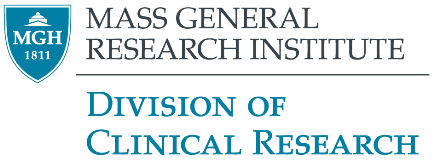A Study of BIIB067 (Tofersen) Initiated in Clinically Presymptomatic Adults With a Confirmed Superoxide Dismutase 1 Mutation
Purpose
The primary objective of this study is to evaluate the efficacy of tofersen in presymptomatic adult carriers of a superoxide dismutase 1 (SOD1) mutation with elevated neurofilament (NF). The secondary objectives of this study are to evaluate the safety and tolerability tofersen and to evaluate the effect of tofersen on pharmacodynamics (PD)/treatment response biomarkers when initiated prior to versus at the time of emergence of clinically manifest amyotrophic lateral sclerosis (ALS).
Condition
- Amyotrophic Lateral Sclerosis Associated With a SOD1 Gene Mutation
Eligibility
- Eligible Ages
- Over 18 Years
- Eligible Genders
- All
- Accepts Healthy Volunteers
- No
Inclusion Criteria
- Participants should have a protocol-defined rapidly progressive SOD1 mutation, confirmed by a central reader, or a SOD1 mutation that is approved for inclusion by an external mutation adjudication committee. - Participants with plasma NfL level less than the protocol-defined threshold. - Participants who are clinically presymptomatic for ALS (i.e., must not have clinically manifest ALS). Key Part A
Exclusion Criteria
- History or positive test result at screening for human immunodeficiency virus (HIV). The requirement for testing at Screening may be omitted if it is not permitted by local regulations. - Current hepatitis C infection (defined as positive Hepatitis C Virus (HCV) antibody and detectable HCV RNA). Participants with positive HCV antibody and undetectable HCV Ribonucleic Acid (RNA) are eligible to participate in the study (United States Centers for Disease Control and Prevention). - Current hepatitis B infection (defined as positive for hepatitis B surface antigen (HBsAg) and/or anti-Hepatitis B Core antibody (HBc)). Participants with immunity to hepatitis B from previous natural infection (defined as negative HBsAg, positive anti-HBc, and positive anti-hepatitis B surface antibody (HBs) or vaccination (defined as negative HBsAg, negative anti-HBc, and positive anti- HBs) are eligible to participate in the study. - History of systemic hypersensitivity reaction to tofersen, the excipients contained in the formulation, and if appropriate, any diagnostic agents to be administered during the study. - History of confounding neuromuscular or neurological disorder that is expected to have a progressive (i.e., worsening) course during the study, and/or is expected to be associated with elevations in NF, in the opinion of the Investigator. - Presence of risk for increased or uncontrolled bleeding and/or risk of bleeding that if not managed optimally could place a participant at an increased risk for intraoperative or postoperative bleeding. - Significant cognitive impairment, clinical dementia, or unstable psychiatric illness, including psychosis, suicidal ideation, suicide attempt, or untreated major depression ≤ 90 days of screening, which in the opinion of the Investigator would interfere with the study procedures. - Treatment with riluzole, edaravone, and/or sodium phenylbutyrate/taurursodiol (also known as ursodoxicoltaurine). If the participant has been on riluzole, edaravone, and/or sodium phenylbutyrate/taurursodiol, the medication(s) must be discontinued for at least 5 half-lives prior to Screening. - Use of off-label treatments for ALS. - Treatment with another investigational drug (including investigational drugs for ALS through compassionate use programs), biological agent, or device within 1 month or 5 half-lives of study agent, whichever is longer. Specifically, no prior treatment with small interfering RNA, stem cell therapy, or gene therapy is allowed. - Anticipated need, in the opinion of the Investigator, for administration of any antiplatelet or anticoagulant medication (e.g., clopidogrel) that cannot be safely continued or held for an LP procedure, if necessary, according to local or institutional guidelines and/or Investigator determination. - Current enrollment or a plan to enroll in any interventional clinical study in which an investigational treatment, biological agent, device, or approved therapy for investigational use. Participation in a noninterventional study focused on ALS natural history may be allowed at the discretion of the Investigator. NOTE: Other protocol defined Inclusion/Exclusion criteria will apply.
Study Design
- Phase
- Phase 3
- Study Type
- Interventional
- Allocation
- Randomized
- Intervention Model
- Parallel Assignment
- Primary Purpose
- Treatment
- Masking
- Triple (Participant, Investigator, Outcomes Assessor)
Arm Groups
| Arm | Description | Assigned Intervention |
|---|---|---|
|
No Intervention Part A: Natural History Run-in |
Participants enrolled in Part A will undergo blood draws approximately once every 28 days to assess neurofilament light chain (NfL) levels. |
|
|
Experimental Part B: Randomized, Double-Blind, Placebo-Controlled |
Participants from Part A who meet the protocol-defined NfL threshold and remain presymptomatic may be eligible to participate in Part B. During Part B, participants will receive tofersen 100 milligram (mg) or placebo via intrathecal (IT) injection on Days 1, 15, 29, and every 28 days thereafter for up to approximately 5.6 years. |
|
|
Experimental Part C: Open-Label Extension |
Participants from Part B who develop clinically manifest ALS may be eligible to participate in Part C. During Part C, participants who received placebo in Part B will receive tofersen 100 mg via IT injection on Days 1, 15, 29, and every 28 days thereafter up to the final maintenance dost visit. Participants who received tofersen during Part B will receive tofersen 100 mg on Days 1, 29, and every 28 days thereafter up to the final maintenance dost visit, with a dose of placebo on Day 15 to maintain the study blind. The combined duration of Part B and Part C is up to approximately 5.6 years. |
|
|
Experimental Part D: Open-Label Treatment |
Participants from Part A who develop clinically manifest ALS prior to randomization in Part B may be eligible to participate in Part D. During Part D, participants will receive tofersen100 mg via IT injection on Days 1, 15, 29, and every 28 days thereafter for up to 2 years. |
|
Recruiting Locations
Massachusetts General Hospital
Boston, Massachusetts 02114
Boston, Massachusetts 02114
More Details
- Status
- Recruiting
- Sponsor
- Biogen
